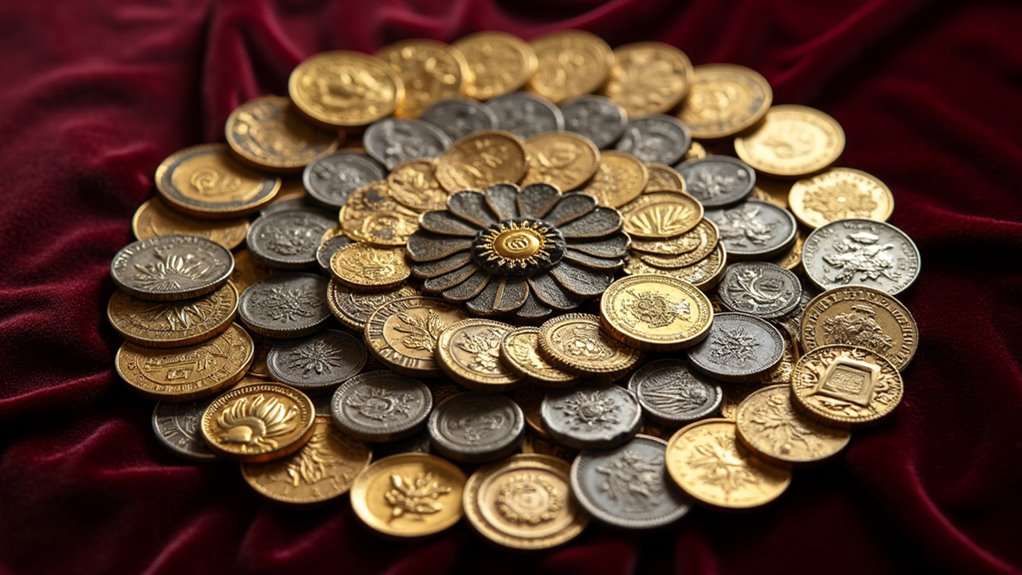Russian Gold Market Analysis and Global Implications
The Russian gold market has experienced significant volatility in early 2025, with prices declining 12.22% from 298,377₽ to 247,982₽ per ounce between January and mid-March. This substantial movement reflects broader market adjustments, with price fluctuations reaching approximately 20% during this period. The average price of 267,722₽ per ounce provides some context for these movements, though it doesn’t fully capture the dynamic nature of this market.
Technical analysts have identified key resistance levels at 2937, 2942, and 2950 RUB, which have become important reference points for market participants monitoring price movements. These technical indicators contribute to trading strategies during periods of heightened market activity.
The ongoing geopolitical situation continues influencing Russia’s gold market, with the precious metal maintaining its traditional role as a store of value during uncertain times. Despite international restrictions, Russia’s gold trade has adapted to changing circumstances, finding alternative trading partners and distribution channels.
International Relations and Trade Patterns
The redirection of Russian gold flows toward alternative markets, particularly in Asia, demonstrates the adaptability of precious metals trading. Beijing and New Delhi have emerged as significant destinations for Russian gold, illustrating how market participants adjust to evolving international circumstances.
For Australian investors and market observers, these shifting trade patterns offer important insights into how geopolitical developments can reshape established market relationships. Understanding these dynamics provides valuable context for interpreting global gold price movements and their potential implications for Australian markets.
Central Bank Activity and Market Implications
Central banks globally have maintained strong acquisition activity, with institutional purchases exceeding 1,100 metric tonnes in 2022 alone. This trend illustrates the ongoing importance of gold within official reserve management strategies, particularly during periods of economic uncertainty.
Russian minting facilities, particularly those in Saint Petersburg and Moscow, have continued production activities that contribute to domestic supply channels. This production capacity represents an important factor in Russia’s ability to maintain its position within global gold markets despite changing international circumstances.
The significant central bank participation in gold markets reflects broader strategic considerations regarding portfolio diversification and risk management. This institutional interest provides important support for gold valuations beyond traditional investment and jewellery demand sources.
Market Outlook and Australian Perspective
The Russian gold market continues to demonstrate considerable volatility, influenced by both domestic factors and international developments. While precise forecasts remain challenging, ongoing geopolitical considerations are likely to maintain gold’s relevance as a strategic asset class.
For Australian investors, Russia’s gold market developments provide valuable insights into broader global trends. Australia’s position as a major gold producer creates natural interest in understanding how international market dynamics might influence future pricing and demand patterns. Our domestic gold industry maintains different operational and regulatory characteristics compared to the Russian sector, but both contribute significantly to global supply.
Australia’s strong mining governance framework and transparent market structures offer a contrasting approach to gold production and trading compared to some international counterparts. These differences highlight the diverse approaches to precious metals markets across major producing nations.
Frequently Asked Questions
How Do International Sanctions Affect Gold Prices in Russia?
International sanctions have created notable impacts on Russia’s gold market dynamics. Domestic purchasing activity has increased substantially, with Russian institutions significantly expanding their acquisition programs. This heightened local demand has influenced domestic pricing, often creating premium valuations compared to international benchmarks.
The restrictions have affected approximately $19.1 billion in export revenue, prompting strategic adjustments in how Russian gold reaches international markets. The isolation from certain traditional trading channels has contributed to the development of alternative market structures that operate with different pricing mechanisms compared to global standards.
These developments demonstrate how regulatory interventions can reshape established market relationships, creating distinctive trading environments within specific jurisdictions.
Can International Investors Access Russian Gold Markets?
International investors face considerable challenges accessing Russian gold markets under current conditions. While theoretical pathways exist through qualified clearing membership arrangements, practical implementation encounters significant operational barriers.
Many international financial institutions have implemented internal policies restricting transactions involving Russian gold, creating additional complexity beyond official regulatory requirements. Alternative channels involving intermediaries may exist, though these typically involve heightened compliance considerations and operational challenges.
Payment system restrictions represent another significant obstacle, as conventional international settlement mechanisms have limited availability for these transactions. These circumstances have effectively created segmented market structures with reduced international participation compared to previous periods.
What Is Russia’s Gold Storage Infrastructure?
Russia maintains a diversified gold storage infrastructure with capacity distributed across different regions. Moscow houses substantial storage facilities under central bank management, representing the primary repository for official reserves.
Western regions feature advanced security systems for precious metals storage, while Siberian facilities tend to be strategically positioned near important mining centres including Krasnoyarsk and Irkutsk. The Far East region maintains specialised storage capacity near production areas such as Omsukchan.
This distributed storage network accommodates Russia’s substantial official holdings, reported at approximately 2,335.85 tonnes, while providing capacity for ongoing acquisition activities. Storage expansion initiatives continue alongside production developments.
How Does Currency Volatility Affect Russian Gold Trading?
Currency fluctuations create significant implications for Russian domestic gold trading. Ruble volatility typically generates wider bid-ask spreads in local gold markets, increasing transaction costs and creating additional considerations for market participants.
Periods of currency weakness generally correspond with increased interest in gold as a potential store of value, though reduced purchasing power simultaneously constrains retail participation. Institutional investors often accelerate acquisition programs during currency instability, viewing gold as a strategic hedge against domestic currency depreciation.
These dynamics can contribute to distinctive trading patterns within Russian markets compared to international exchanges, creating potential arbitrage opportunities for participants able to navigate the regulatory environment.
What Documentation Requirements Apply to Gold Transactions in Russia?
Russian gold transactions involve specific documentation requirements designed to ensure regulatory compliance. Standard requirements include valid identification, ownership verification documentation (such as receipts or certificates), and tax identification information.
Larger transactions incorporate additional anti-money laundering compliance documentation, reflecting alignment with international standards in this area. Export transactions require customs declarations and appropriate licensing, creating additional administrative processes.
Commercial entities may need supplementary permits depending on transaction characteristics, while international participants face enhanced documentation requirements. Product certification verifying gold purity represents an essential element for all formal transactions within the Russian market.
Note: This market analysis is provided for informational purposes only and does not constitute financial advice. All investors should conduct their own research or consult with qualified financial professionals before making investment decisions.



